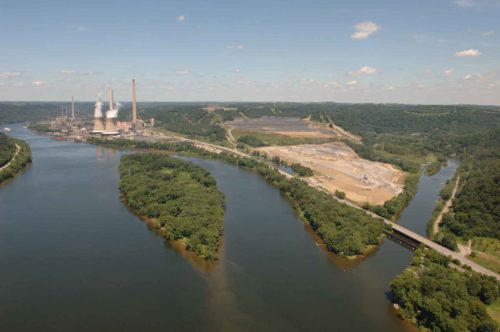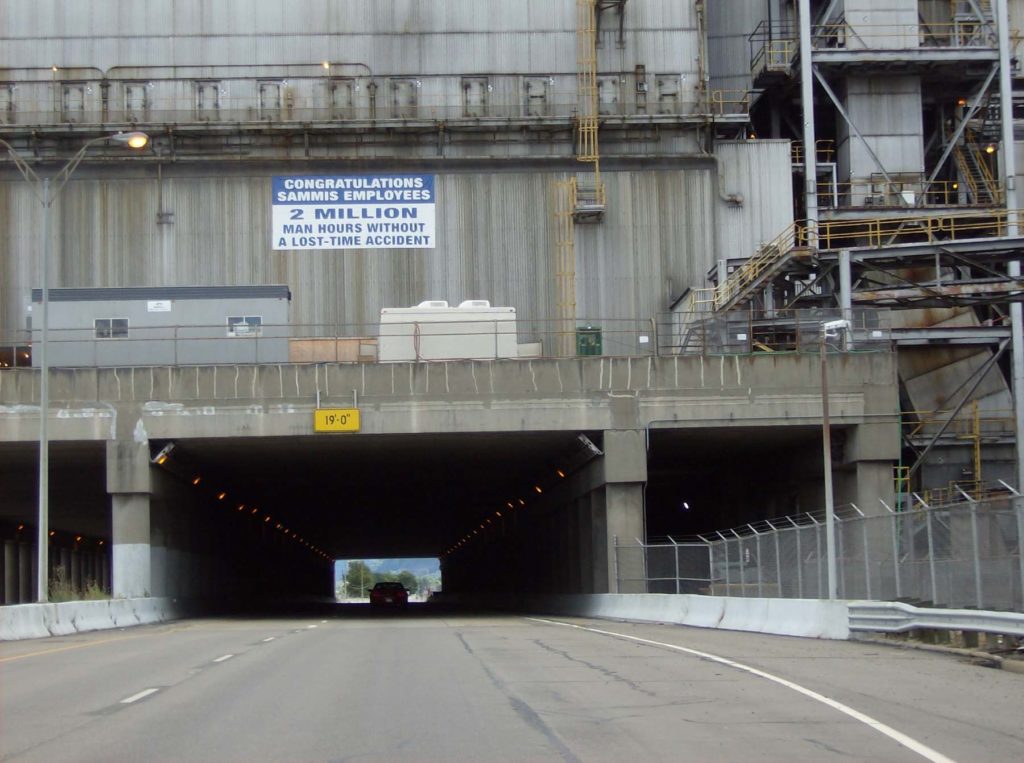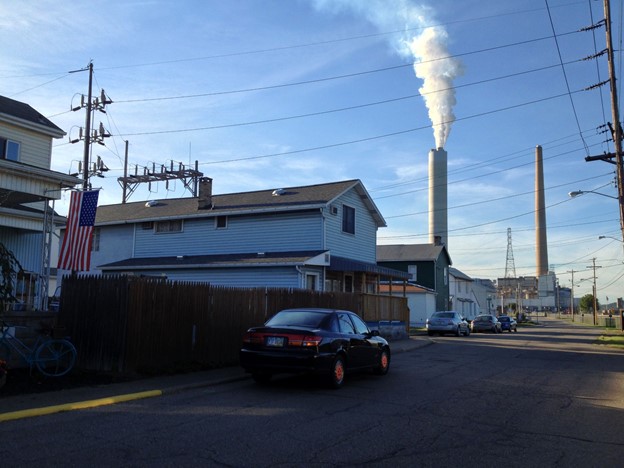
When a Coal Plant Gets Built on Top of a Highway, What Happens When It Closes?
This article is a guest posting by Nachy Kanfer, a partner at Donovan Energy. Nachy helps support the Carbon Free Electricity team’s coal-focused work and is a member of RMI’s Utility Transition Hub development team.
Near the border with Pennsylvania in Stratton, Ohio, the four-lane Ohio River Scenic Byway, State Route 7, runs right through a 2.2 gigawatt coal-fired power plant. The massive W.H. Sammis Power Plant has been burning coal to generate electricity for over 60 years. How did it get built over a highway?

FirstEnergy, the plant’s operator, was forced to install a multi-billion dollar pollution control upgrade in 2005 after the U.S. Environmental Protection Agency successfully sued over violations of the Clean Air Act. But sited on a limited industrial footprint next to the scenic byway, there wasn’t enough room to install the equipment at the Sammis plant. So FirstEnergy built a platform on top of the highway, and then squeezed its new pollution control equipment on top of the platform.
The Capacity Auction Squeeze
In the last couple of weeks, the Sammis plant, and coal plants like it all over the Midwest and mid-Atlantic have found themselves back in a tight squeeze—this time financially—and they may not have such an easy solution. PJM Interconnection, often called the world’s largest wholesale electricity market, is the entity charged with overseeing the bulk power system for much of the Midwest and mid-Atlantic. Among its many functions, PJM periodically operates an auction to select which power plants are awarded capacity payments, compensation to remain online for reliability purposes.
Participating power plants bid into the auction at more or less their fixed cost, and theoretically this allows PJM to economically procure sufficient capacity. The most efficient, least-cost power plants tend to “clear” the auction and therefore receive capacity payments from PJM. The least efficient, highest-cost power plants tend not to clear.
We don’t know if Sammis cleared the auction. The individual plant-level results are confidential, though operators can and often do disclose their results to investors and the public. For example, the week after the auction, NRG announced it would be closing three of its coal plants in PJM in the near term. The power company strongly implied, though did not directly state, that the decision was fallout from the capacity market results. Energy Harbor, the company that emerged from FirstEnergy’s partial bankruptcy and the current owner of Sammis, has chosen not to disclose its results.
But we do know that Sammis, and other coal plants like it in Ohio, Pennsylvania and the rest of the region, are in a tough spot. The clearing price from the most recent PJM auction was significantly lower than most analysts expected. According to PJM, the total amount of coal capacity that cleared the auction was 8 GW lower than the previous auction—equal to almost five coal plants the size of Sammis. Renewables, nuclear plants, and gas plants, in the meantime, all increased their market share in PJM.
An Uncertain Future
Sammis has been at risk for quite some time. In 2018, in a transparent plea for a bailout from the Trump administration and/or Ohio lawmakers, FirstEnergy announced that Sammis would close in 2022. Subsequently, the Ohio General Assembly passed House Bill 6, a highly controversial piece of legislation that provided income guarantees for certain nuclear and coal plants.
Although HB 6 did not directly affect Sammis, FirstEnergy quickly announced in the following days that the plant would stay open. Since that time federal prosecutors have alleged that FirstEnergy bribed Ohio House Speaker Larry Householder and other actors to the tune of $61 million to pass and defend HB 6.
Given that Sammis has been on the brink of closing for years (its four smallest units have already closed), and given that significantly less coal cleared the most recent PJM auction, it is possible that the rest of the facility failed to clear this month. If so, a retirement announcement could be coming soon. This raises serious questions not only about all that expensive equipment sitting on a platform on top of Ohio State Route 7, but for over 350 Sammis employees and the opportunity for economic redevelopment in Stratton and surrounding communities.

These questions are not unique to Sammis. Nearly every coal plant in PJM is vulnerable to closure in the near term. Each coal plant has a dedicated, highly trained workforce; these jobs tend to be union and among the highest paying in their local communities. Each coal plant contributes to the local tax base and school districts. And each coal plant has environmental liabilities on site such as unlined coal ash ponds that, if not fully remediated, pose a long-term threat to drinking water and public safety. While replacing coal with clean energy is critical to stay on a climate-aligned 1.5-degree trajectory, each retiring coal plant throws a community into uncertainty as they grapple with these issues.
This month’s PJM auction results make abundantly clear that another round of coal plant retirements is coming. For Sammis, and coal plants like it throughout the region, we collectively have the opportunity to clean up and redevelop these sites, use them to facilitate large-scale renewable energy interconnection and/or economic development, and treat workers and communities with respect and dignity. The alternative is to watch them rust away, on derelict concrete platforms teetering above public highways and industrial plots along the Great Lakes, as the remaining economic value is siphoned off with no regard for those left behind.
Learn more about the challenges and opportunities of energy transition in the utility sector by exploring RMI’s Utility Transition Hub. To stay informed with the latest insights and projects developments around the utility transition, we encourage you to subscribe to receive monthly email updates from our Utility Transition Hub team here.